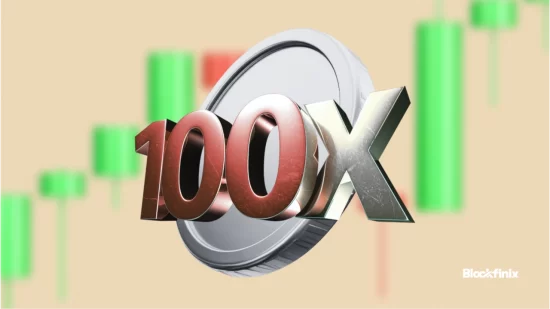Crypto multipliers are some of the most common terms used by traders and investors. A multiplier is a tool that allows traders to magnify the size of their position, practically allowing them to control a larger trade share with less initial investment. Such provision offers traders the potential to benefit from more significant market shifts at a modest cost.
The crypto market’s volatility means prices can shift swiftly, leaving massive room for traders with minimal capital investment to take advantage of multipliers in maximizing returns. However, with the same potential for higher rewards come heightened risks. Multipliers can boost profits, but they also magnify losses.
Here’s a comprehensive answer to the question, “What do the multipliers in crypto contracts mean?” We’ll also explore various types of multipliers and how they work, plus some handy tips on selecting the best multipliers.
First, what are crypto contracts?
When discussing “crypto contracts” in the context of trading, we’re primarily referring to cryptocurrency derivatives, with a strong emphasis on Futures contracts.
Crypto derivatives are financial instruments whose value is derived from an underlying asset—in this case, cryptocurrencies like Bitcoin, Ethereum, and many others. Basically, crypto contracts allow traders to speculate on the future price of crypto without actually owning the underlying coins.
There are different types of crypto contracts, which include Futures, Options, and so on, all of which we shall discuss further in this article.
What do multipliers in crypto contracts mean to traders?
Crypto multipliers allow traders to amply their exposure to a specific asset without investing the full amount upfront. Put differently, a multiplier boosts the potential returns on an investment by leveraging a smaller initial deposit.
Suppose a 10x multiplier that a $100 investment would trade as $1000. Any price movement in the cryptocurrency will have ten times the impact on your investment. Should the price increase by 5%, the profit would be based on the $1,000 position rather than the $100 investment, resulting in a $50 rather than $5.
However, with such a potential opportunity comes a corresponding risk. That’s why traders want to be careful with multipliers as they can serve as a double-edged sword. Multipliers may magnify gains, but they can also amplify losses.
Types of contracts where multipliers can be used
Multipliers are typically used for various crypto contracts like Options, Futures, and Index Futures. Here’s how multipliers work in each contract type.
Option Contracts
Option contracts give traders the right, but not the obligation, to buy or sell an underlying asset at a defined price (strike price) before a certain expiration date. A common multiplier for options is 100x, meaning that one contract controls 100 shares of the underlying assets.
Futures Contracts
In Futures, the buyer and seller get the obligation to exchange an asset at a predetermined price at a future date. Multipliers in futures contracts determine the dollar value associated with each point movement in the underlying asset’s price.
Some crypto exchanges like Binance, Bybit, etc., offer up to 125x multiplier or leverage for certain major crypto assets, especially Bitcoin and Ethereum.
Index Futures Contracts
Index Futures contracts are based on the performances of stock market indexes like Nasdaq, Dow Jones, and the S&P 500. The multiplier type used in such contracts varies across varying markets.
For instance, in the United States, the multiplier for e-mini S&P 500 contracts is 50x, while it is 20x for e-mini Nasdaq contracts.
Types of multipliers in crypto contracts
We can categorize crypto contract multipliers into low and high multipliers, each serving different trading strategies and risk appetites.
Low multipliers are typically in the range of 2x to 5x range of your initial cryptocurrency’s worth. They’re common among conservative traders who want a bit of additional leverage without excessive risks. Investors who are averse to heavy risks or are trading markets with moderate volatility often consider this multiplier type.
High multipliers are usually in the range of 10x and above. High leverage is more common with high-risk traders who are confident in their market predictions and don’t mind taking greater risks for the chance of higher returns.
High multipliers offer a high-profit potential for traders; however, they also come with a heightened risk of rapid losses, which can lead to liquidation of the trader’s position should the market defy their predictions.
Factors that determine multiplier values
Various factors can determine a multiplier value in crypto trading. They range from market dynamics to regulatory barriers and a trader’s private sentiments.
1. Market volatility
Volatility is one of the main factors that influences multiplier values. Highly volatile markets enjoy the potential for swifter price swings, which can affect the perceived risk and reward of using multipliers. But as always, traders can adjust their multiplier usage based on their expectations of market volatility. It is best to choose lower multipliers in turbulent conditions to manage risks.
2. Trader sentiment and habit
When a trader is optimistic and confident about market trends, they’re more likely to use higher multipliers to maximize potential gains. On the other hand, in uncertain markets, traders are more likely to choose lower multipliers to mitigate potential losses. This collective sentiment can influence the overall demand for varying multiplier levels.
3. Risk management practices
Traders with robust risk management strategies may feel more convenient using higher multipliers, as they have enshrined measures to prevent significant losses. Conversely, more conservative traders are more likely to choose lower multipliers that align with their risk tolerance rates.
4. Liquidity and market depth
The market’s liquidity and depth can also influence the availability and pricing of multipliers. For instance, in markets with high liquidity, traders may find it easier to enter and exit positions with their desired multipliers. However, in less liquid markets, the availability of certain multipliers may be limited, and their costs could be higher due to wider spreads and slippage.
5. Regulatory and platform-based limits
Regulatory guidelines and platform-based limits can also affect multiplier values. Some trading platforms impose limits on how much traders can leverage, which can affect a trader’s potential options.
Similarly, regulatory changes can change the landscape of how traders use multipliers in crypto contracts. With such interventions, traders must adjust their strategies to abide by the latest governing regulations in the crypto space.
Pros of using multipliers in crypto contracts
In this section, we’ll be exploring the merits and demerits of using multipliers in crypto contracts. We begin with the benefits.
1. Higher profit potential
Multipliers allow traders to control larger positions with smaller amounts of capital. For instance, a 10x multiplier means that a $1000 investment can control $10,000 worth of virtual assets. Such amplification can significantly boost a trader’s potential profits should markets move to the trader’s expectations. This feature becomes even more attractive in rapidly rising markets where traders can make substantial gains in a short period.
2. Larger market participation
Multipliers allow traders with limited capital to participate more actively in the market. That way, more individuals can engage in potentially lucrative trades. Moreover, traders also get the chance to employ various strategies like day trading or swing trading, as they leverage short-term price movements with higher leverage.
3. Flexible trading
Multipliers allow traders to profit from declining markets by short-term cryptocurrencies. This flexibility can be very advantageous in bearish trends, offering opportunities to leverage falling prices. Many trading platforms offer varying levels, letting traders choose based on their risk appetite and market outlook.
Cons of using multipliers in crypto contracts
Next, we explore the risks associated with using multipliers.
1. Amplified losses
This is easily the most obvious risk of using a multiplier. While multipliers can amplify gains, the tiniest adverse price movement can lead to significant losses, especially with high multipliers. For instance, seeing a 10% loss on a position controlled by a 10x multiplier equates to a 100% loss of the initial capital.
In the worst-case scenario, the trader could face liquidation where the trading platform closes the position to recover borrowed funds. This usually happens when the account balance falls below a required threshold after the market moves against a leveraged spot.
2. Complex market dynamics
Traders need a strong understanding of complex market dynamics to effectively use multipliers. Also, they must master risk management and technical analysis – abilities that inexperienced traders may struggle with. Meanwhile, leveraged trading requires constantly monitoring the market, which can be both stressful and time-consuming.
3. Volatile markets
The crypto market is renowned for a volatility level that could pressure traders into making emotional choices. Swift price fluctuations can trigger stop-loss orders or lead to unexpected losses, especially for those using high multipliers. Should traders give in to the stress of managing leveraged positions at the wrong time, they risk making significant losses.
How to pick the right multiplier size
Now that you know what multipliers in crypto contracts mean and what they can do, it’s equally important that we tell you how to choose the right multiplier size when trading crypto contracts. Here are some vital factors to note when choosing the right multiplier size for a trading session or activity.
- Risk tolerance: Traders who are risk-averse or new to crypto trading want to choose lower multipliers (in the 2x to 3x). That way, they can minimize potential losses while they gain needful experience.
- Investment timeframe: Short-term traders leverage higher multipliers in capitalizing on rapid price fluctuations. However, with long-term trading, using lower multipliers may be more effective for building wealth over time.
- Market conditions: Lower multipliers can help you manage risk and protect your capital during periods of high volatility. On the other hand, when the market is calmer, higher multipliers may be better suited to boost potential gains.
- Experience level: We recommend beginning with lower multipliers until you gain confidence and build effective risk management strategies. Conversely, more experienced traders may comfortably trade higher multipliers due to their understanding of market dynamics.
Conclusion
The takeaway or short answer to the question, “What are the types of multipliers in crypto contracts?” is simply that multipliers are leverages that allow traders to amplify their position sizes when trading contract contracts.
The multiplier size can vary depending on the exchange and coins being traded. The likes of Binance offer up to 125x leverage for BTC and other major crypto assets.
Multipliers, however, are simply a double-edged sword. While it can magnify your capital size when trading, it also increases your risk of loss at the same time.





